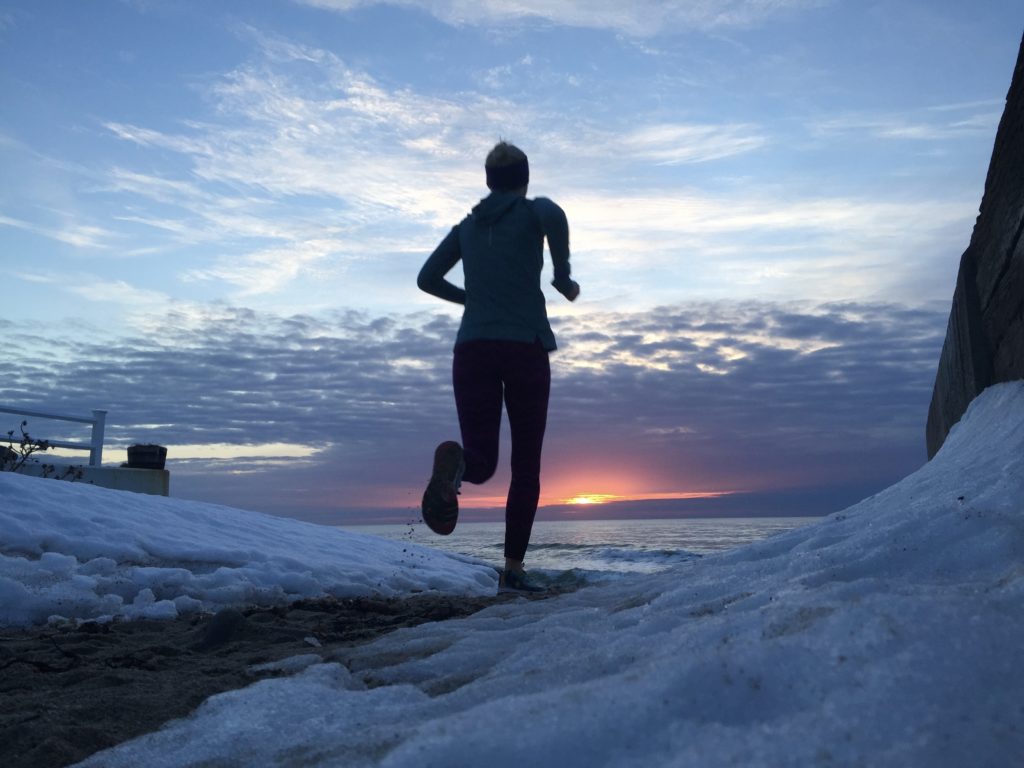There are two types of people when it comes to the winter season: Those who thrill at that first whiff of frosty air and those who strongly consider hibernation as an alternative to having to go outside.
But whether you jump out of bed at the prospect of a good winter run or reluctantly drag yourself to the door, being properly dressed for the weather is key to both comfort and performance. So here are a few tips on what to wear for winter running to make it really enjoyable (yes, even for you summer-lovers).

Wear Moisture-Wicking Fabrics
Those light, technical fabrics may not look warm, but trust us when we say the last thing you want during a winter run is sweat soaking through heavy layers of fabric. As that moisture builds up, it also cools, making it basically impossible to stay warm.
Make sure your base layers are light, breathable, and made to wick sweat away from your body as you run. This combined with heavier outer layers will ensure that you stay both dry and warm throughout your workout.
Keep Your Feet Warm
Your feet are pretty important to this whole running thing, so make sure you’re taking care of them as temperatures drop toward, and below, freezing. If your running shoes aren’t designed for cold and wet weather, it may be worth it to invest in a pair that’s waterproof and will provide traction on slick surfaces.
You’ll also want to wear high-quality (and again, moisture-wicking) socks that cover at least your ankles, if not your calves too.
Be Windproof
Your outer layers for running in winter shouldn’t just be warm, they should be windproof. That frosty wind that cuts right through you when you’re just standing outside in freezing temperatures can be downright brutal when you’re trying to finish a run.
Look for a moisture-wicking fleece or thermal mid-layer that you can cover with a light, windproof shell, and you’ll be running happy in no time.
Gloves and Hats and Neck Warmers, Oh My!
Particularly in below freezing temperatures it’s incredibly important to remember those parts of your body you haven’t covered by other gear, namely your hands, head and neck.
Gloves and a hat or headband that covers your ears can make all the difference in comfort on a really cold day, and a breathable neck warmer helps you warm the air coming into your lungs to prevent that burning feeling. Remember we lose a lot of our body heat through our heads and necks, so these small pieces of gear actually have a big impact.
Above all, test things out! If you’re uncomfortable on a run, change something up for the next, and cut yourself some slack. Running in winter is a challenge, but with the right gear that makes you feel comfortable, it’s a challenge you can beat—no sweat.
